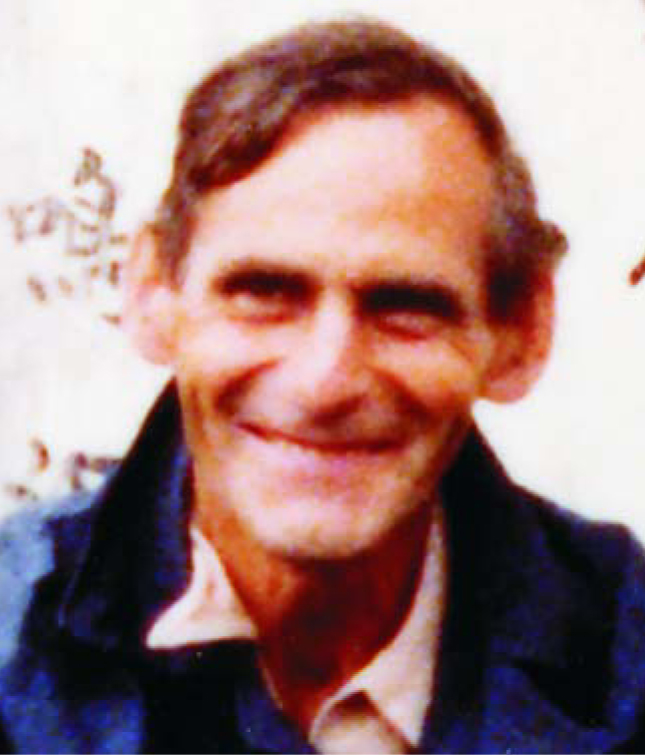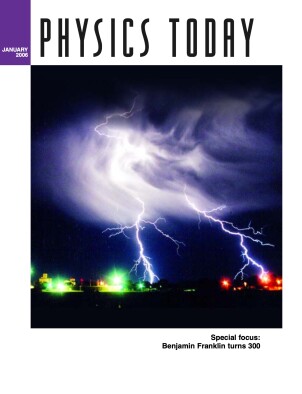George Patrick Leonard Walker
DOI: 10.1063/1.2180190
Internationally renowned volcanologist and mentor George Patrick Leonard Walker died in England on 17 January 2005.
Born in London on 2 March 1926, George grew up in Northern Ireland, where he earned his BSc and MSc in geology at Queen’s University Belfast. In 1956, he received his PhD in mineralogy at Leeds University, though he had already been appointed to a lectureship at Imperial College London in 1954. Although his research interests were somewhat influenced by the ancient volcanic rocks found near Belfast, George always focused his interest on the processes leading to the features that he observed in the field.
His research career began with recognizing and mapping the distribution of secondary minerals (zeolites) in the basaltic lavas of Iceland. Field observations also led him to gather important information concerning the geology of Icelandic volcanic centers, the special deposits formed when eruptions take place beneath glaciers, and the distribution of dike swarms that now are known to be visible records of crustal spreading. George’s early work in Iceland thus made important contributions to the emerging theory of plate tectonics.
When he moved to New Zealand in 1978 as a Captain James Cook Research Fellow of the Royal Society of New Zealand, George devoted his energy to studying explosive rhyolitic volcanism in a subduction zone of unprecedented intensity. In 1981 he became the Gordon MacDonald Chair in Volcanology at the University of Hawaii, a move that brought another new venture for a man who was never short on new insights. He immediately made important contributions to understanding the geology of oceanic basaltic volcanic islands and the dynamic processes by which lava flows were emplaced and underwent changes. Throughout this time he developed methods that have been adopted and followed by volcanologists all over the world and that became the base for volcanology’s great strides in the second half of the 20th century. After 1996 he returned to his native England, where he continued research as an honorary professor at the University of Bristol until his death.
George always deeply enjoyed working in the field, even when weather conditions were far from pleasurable. His fieldwork always resulted in a plethora of observations upon which he applied basic aspects of the scientific method for interpretation. He was convinced that “common sense is the least common of the senses,” as he was fond of saying to his students and colleagues, and that more often than we are willing to acknowledge, we start investigations with a number of prejudices that bias our thinking. Consequently he made great efforts to let observations speak for themselves, and searched for explanations rooted in a judicious application of basic principles rather than relying on more elaborated models.
George always had a pocketful of sample bags and his dependable garden trowel at hand. If he participated in a conference-related field trip, while his colleagues listened to the summary of findings related to a particular outcrop made by the trip leader, George preferred to wander alone collecting samples. More often than not, the samples were later included in some publication that combined observations made in many parts of the world. His numerous published scientific papers always benefited from a maximum of personal observations made in a large number of outcrops sometimes found many thousands of kilometers apart.
George’s many students often relate what a wonderful teacher and scientific collaborator he was. He was always available for them and patient enough to explain any particular subject as many times as necessary. He made no distinction between a junior student taking a course in basic volcanology and a PhD student working in the most advanced of topics.
The energy George displayed during his classes was surpassed only by the energy he devoted to fieldwork, and the enthusiasm that those two activities inspired in him was rivaled only by his reluctance to use personal computers. He commonly did not use much modern instrumentation to prepare his class notes, to analyze his field observations, or to produce the diagrams included in his publications; rather, he developed through time a series of techniques that allowed him to complete such tasks more efficiently than many people did using the latest computer model. George was always open to collaborations with scientists who used the most recent advances in technology, even in fields that are not traditionally considered part of a field geologist’s arsenal. Consequently, over time he acquired a vast knowledge of volcanic processes that could not be achieved only through field-based studies.
The worldwide scientific communities recognized the exceptional value of George’s work by granting him their highest awards. Particularly notable is the Icelandic Order of the Falcon conferred on him in 1977, an honor rarely given to a foreigner and one that reflected George’s fundamental contributions to the geology of that country.
Despite his many personal achievements, George continued to be an unassuming and soft-spoken leader who was never pretentious or inconsiderate of others. Young scientists making their first presentation at an international meeting would later find George at their side commenting on the importance of their work and offering his original thoughts or giving supportive suggestions for their plans. More than a few of those students were later quite surprised to learn that it had been the famous George Walker who had approached them.
We will all be reminded of how much knowledge George has given to the field of volcanology.

George Patrick Leonard Walker

More about the Authors
Stanley N. Williams. 1 Arizona State University, Tempe, US .
Edgardo Cañón-Tapia. 2 Centro de Investigación Científica y de, Educación Superior de Ensenada, Ensenada, Mexico, US .
